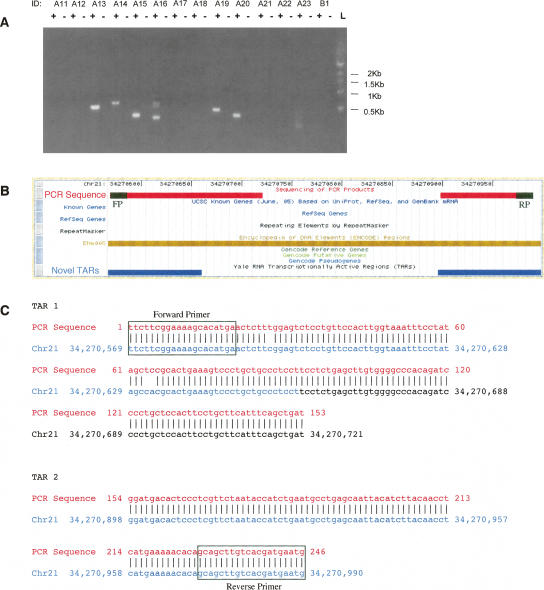Figure 8.
(A) Image of an agarose gel of RT-PCR results from testing the connectivity of novel TARs with exons of known genes as well as between pairs of novel TARs clustered as a novel transcribed locus. This was performed using placental poly(A)+ RNA, where + indicates the presence of reverse-transcriptase; –, its absence; and L, the molecular weight ladder. A table of regions tested and their corresponding IDs and primer sequences is located in Supplemental Table 1. (B) Example of a pair of novel TARs (id B15) predicted to be associated with each other, potentially as part of a single transcript. This was confirmed by RT-PCR using placental RNA and was also successfully sequenced. The region displayed is on chromosome 21 from 34,270,568 to 34,270,998 (NCBI build 35). The sequence obtained from the PCR product is shown in red, the two connected novel TARs are in blue, and the forward and reverse primers are in black. (C) Alignment of the sequenced PCR product against the genomic sequence shows the transcript that connects the two novel TARs is spliced.

